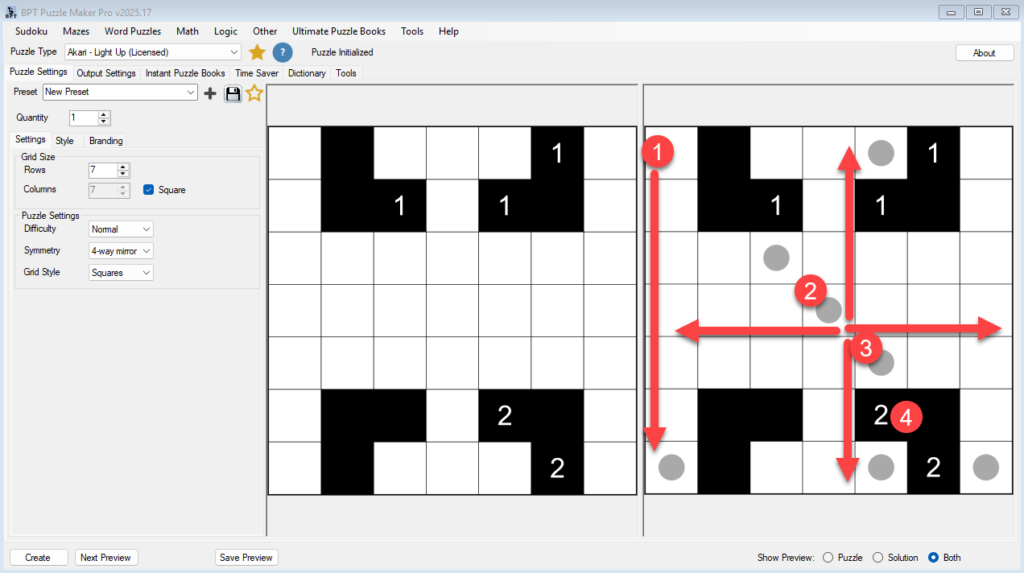Purpose
This tutorial explains how Akari puzzles (also known as Light Up) work and what makes them unique. It helps you understand the logic rules behind the puzzle before you begin creating or customizing them in Puzzle Maker Pro.
Audience
Puzzle creators, educators, and publishers who want to understand the puzzle logic to adjust difficulty and grid layout effectively.
What Is an Akari Puzzle?
An Akari puzzle consists of a grid with black wall cells and empty white cells. Some walls may include numbers. The objective is to place lamps in empty cells so that:
- Every empty cell is illuminated by at least one lamp (1).
- Lamps project light horizontally and vertically until blocked by a wall (2).
- No two lamps may illuminate each other directly (3).
- A numbered wall cell shows how many lamps must be adjacent to it (4).

Key Concepts
- Illumination: A lamp lights all cells in its row and column until stopped by a wall.
- Constraint cells: Numbered walls limit adjacent lamps, controlling difficulty.
- Unique solutions: Well-designed puzzles have one valid solution where all rules are satisfied.
Tips for Puzzle Creators
- Smaller grids (e.g., 5×5 or 7×7) are ideal for quick logic puzzles.
- Symmetrical layouts make puzzles visually appealing and balanced.
- Fewer numbered walls create more open-ended logic paths.
Notes
Understanding how Akari puzzles work helps you fine-tune your difficulty settings and symmetry options in later tutorials.
